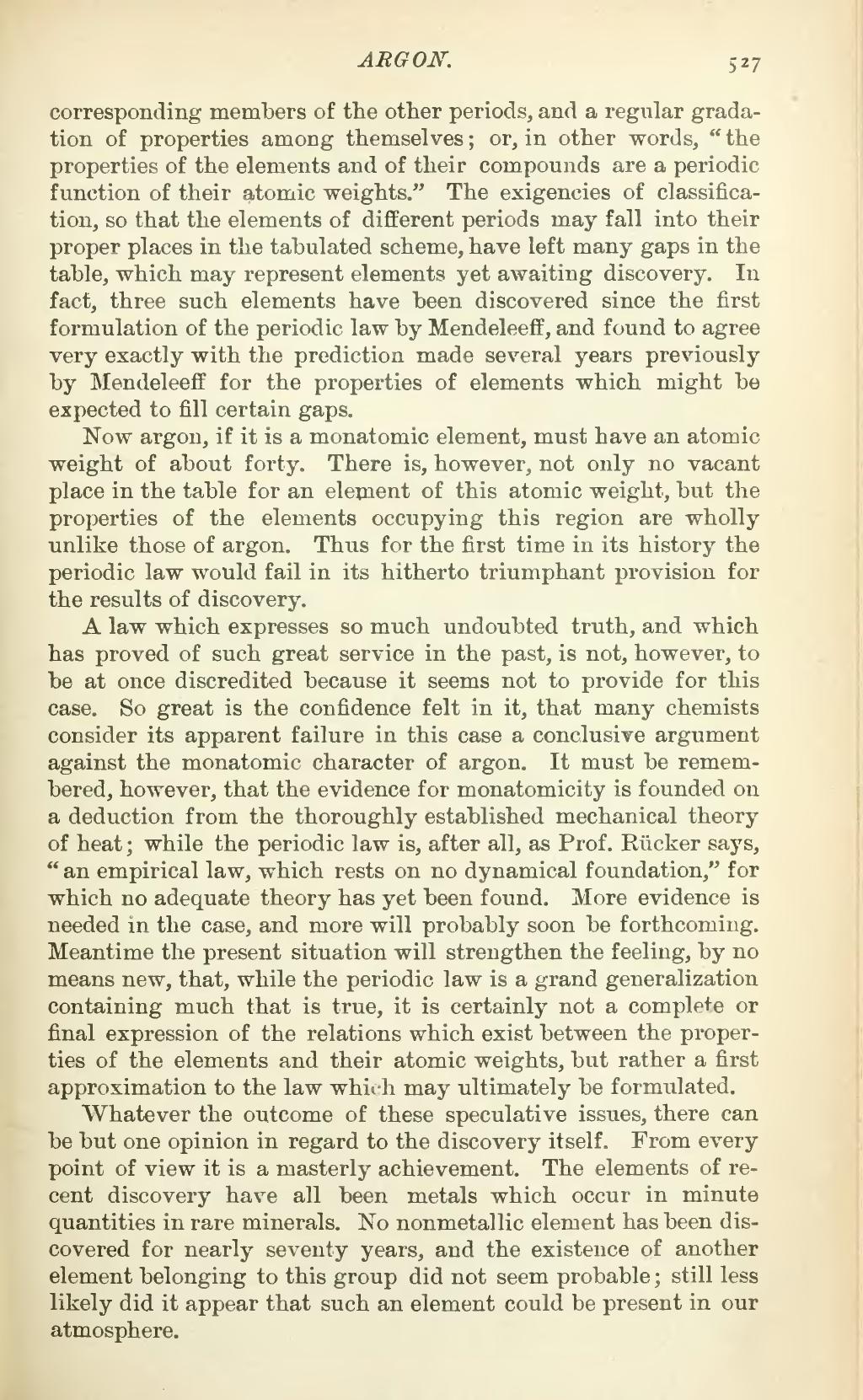corresponding members of the other periods, and a regular gradation of properties among themselves; or, in other words, "the properties of the elements and of their compounds are a periodic function of their atomic weights." The exigencies of classification, so that the elements of different periods may fall into their proper places in the tabulated scheme, have left many gaps in the table, which may represent elements yet awaiting discovery. In fact, three such elements have been discovered since the first formulation of the periodic law by Mendeleeff, and found to agree very exactly with the prediction made several years previously by Mendeleeff for the properties of elements which might be expected to fill certain gaps.
Now argon, if it is a monatomic element, must have an atomic weight of about forty. There is, however, not only no vacant place in the table for an element of this atomic weight, but the properties of the elements occupying this region are wholly unlike those of argon. Thus for the first time in its history the periodic law would fail in its hitherto triumphant provision for the results of discovery.
A law which expresses so much undoubted truth, and which has proved of such great service in the past, is not, however, to be at once discredited because it seems not to provide for this case. So great is the confidence felt in it, that many chemists consider its apparent failure in this case a conclusive argument against the monatomic character of argon. It must be remembered, however, that the evidence for monatomicity is founded on a deduction from the thoroughly established mechanical theory of heat; while the periodic law is, after all, as Prof. Rücker says, "an empirical law, which rests on no dynamical foundation," for which no adequate theory has yet been found. More evidence is needed in the case, and more will probably soon be forthcoming. Meantime the present situation will strengthen the feeling, by no means new, that, while the periodic law is a grand generalization containing much that is true, it is certainly not a complete or final expression of the relations which exist between the properties of the elements and their atomic weights, but rather a first approximation to the law which may ultimately be formulated.
Whatever the outcome of these speculative issues, there can be but one opinion in regard to the discovery itself. From every point of view it is a masterly achievement. The elements of recent discovery have all been metals which occur in minute quantities in rare minerals. No nonmetallic element has been discovered for nearly seventy years, and the existence of another element belonging to this group did not seem probable; still less likely did it appear that such an element could be present in our atmosphere.
